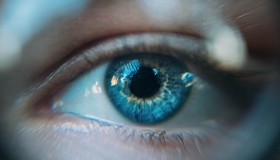Life without glasses is great

Human vision is one of the most important senses, which is why it is surrounded by numerous myths and misconceptions. Some of these have persisted for generations, even though modern science has long debunked them. We present the ten most common myths about eyesight and explain the truth behind them.
This myth is widespread, but it’s not true. Reading in low light can cause eye strain, but it won’t cause permanent damage to your vision. In poor lighting, your eyes work harder and may feel tired, sore, watery, or painful, but these symptoms go away after rest. For comfortable reading, it’s best to use sufficient lighting—ideally natural daylight or high-quality artificial light.
Another common myth with no basis in truth. “Glasses correct visual impairments so your brain receives a clear, sharp image. If someone needs glasses and doesn’t wear them, the eyes have to work harder, which can lead to fatigue, headaches, or blurry vision. But wearing glasses won’t make your eyes lazy or cause your prescription to worsen faster,” explains Radan Zugar, MD, Chief Doctor of Eye Centre Prague.
Carrots are healthy and contain beta-carotene, which the body converts into vitamin A—essential for proper retinal function, especially for night vision. However, eating carrots won’t miraculously improve your vision or eliminate the need for glasses. A varied diet rich in vitamins and minerals is important for good eyesight, not just carrots. Your vision quality is also influenced by genetics, age, and potential eye diseases. So enjoy carrots, but don’t expect miracles.
There are various eye exercise techniques that can help relieve eye strain, especially after long hours on the computer. These exercises may also support better eye coordination, but they do not improve visual acuity or correct refractive errors such as nearsightedness, farsightedness, or astigmatism. These issues are caused by the shape of the eye or irregularities in the cornea and can only be corrected by glasses, contact lenses, or surgery. Eye exercises are helpful for comfort, not as a substitute for vision correction.
Many people believe that wearing sunglasses is unnecessary or even harmful because the eyes might “get used” to the dark lenses and become more sensitive to light. The truth is the opposite. “High-quality sunglasses with UV filters protect the eyes from harmful ultraviolet radiation, which can contribute to the development of cataracts or macular degeneration. Sunglasses are not spoiling your eyes—they are essential protection, and not only in summer. In winter, on the mountains, UV radiation is even stronger,” says Radan Zugar, MD.
Many of us were scared by this myth as children, but it’s not true. Occasional intentional eye crossing during play or curiosity won’t cause permanent changes. Strabismus (crossed eyes) is a medical condition with various causes, such as muscle imbalance, genetics, or vision problems. If a child crosses their eyes outside of play, it’s best to consult an eye doctor. Early diagnosis and treatment can prevent complications like amblyopia (lazy eye).
A classic warning from parents that almost everyone knows. However, watching TV up close does not cause permanent vision damage. Children naturally focus on close objects better than adults, which is why they often sit closer to the screen. Still, prolonged viewing at short distances can lead to eye strain, headaches, or dry eyes. If a child constantly sits too close, it may indicate nearsightedness—so an eye exam is recommended.
Many people think visiting an eye doctor is only necessary when they need new glasses. “But eye doctors do much more than check prescriptions—regular eye exams can detect serious eye diseases early, such as glaucoma, cataracts, or age-related macular degeneration. Vision is one of our most valuable senses, so it pays to take care of it preventively, even without symptoms. A routine check-up can save your sight before any signs appear,” adds Radan Zugar, MD.
Spending long hours in front of screens can cause eye fatigue, dryness, or headaches, but blue light itself does not damage your eyes. Studies have not confirmed that blue light from screens causes long-term harm to vision. However, it is recommended to follow the 20-20-20 rule: every 20 minutes, look at something 20 feet (about 6 metres) away for 20 seconds. This helps reduce eye strain.
Reading glasses from the drugstore can be a quick, temporary solution but are not suitable for long-term use. These glasses have the same power in both lenses and are not tailored to your individual vision needs. If you have different prescriptions in each eye, astigmatism, or other issues, such glasses can cause eye strain, headaches, or blurry vision. For proper vision correction, it’s best to visit an eye doctor and get custom-prescribed glasses. Your eyes deserve more than a one-size-fits-all solution from the shelf.
Healthy Vision Without Myths: Trust the Experts, Not Superstitions
"There are many myths about eyes that people take as facts. But regular care, timely check-ups, and accurate information can prevent unnecessary worries and health problems. Your eyes deserve the same attention as any other organ in your body,” advises Radan Zugar, MD, Chief Doctor of Eye Centre Prague.
Take care of your vision with trust in experts, and don’t be misled by myths that have no basis in reality.
Copyright © 2025, Oční Centrum Praha a.s.
All rights reserved. Website created and managed by iNDiGOmultimedia s.r.o.
